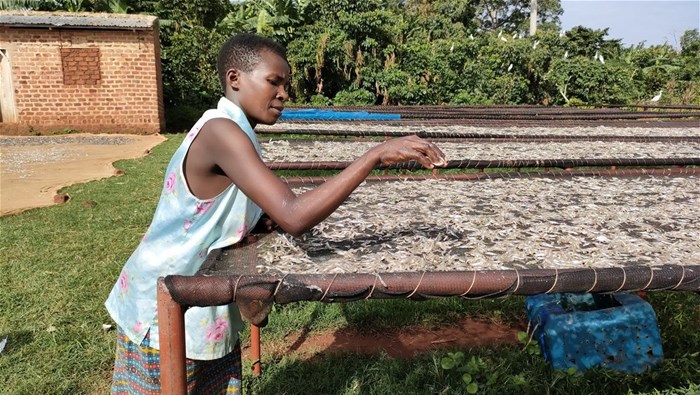
The app is updated by trained data collectors who consult with fishers to gather information such as fish catch quantity, types of fishing nets and boats used, and expected earnings. The app has the potential to accommodate an unlimited number of data sets, making it an invaluable resource for the sustainable development of fisheries in Uganda.
"Before the app, we used papers to ask questions to the fishers. It was a tiresome job because it took a lot of time and could take weeks before an official agent would collect the files," says Ocakacon Muhammed, a trained data collector based at Lake Albert. Peter Enyou, another enumerator at Kikondo landing site on Lake Victoria, explains that the previous system often led to data inaccuracies, "With the paper system, someone could just sit at home and guess where a boat had been and what fish were caught, but with the e-CAS technology and GPS coordinates, even head office in the city knows where the boats are, so enumerators cannot make it up."
Since the system was set up, over 12,000 data records have been documented and consolidated in one place explains Patrick Bwire, systems administrator at the National Fisheries Resources Research Institute (NaFIRRI). Bwire goes on to say that it would normally take two days to physically carry out and look at the census of the boats and the fish landed to make an estimate of the fish stocks. Further, the previous manual approach cost the government about USh400m ($106,340) per year, according to Bwire, but e-CAS has brought the cost down to around USh80m ($21,270).
The app was initially developed in 2021 by NaFIRRI in partnership with regional research institutes in Tanzania and Kenya, under the coordination of the Lake Victoria Fisheries Organization (LVFO). e-CAS is freely accessible through the Google Play Store and the benefits of the technology were immediately recognized by the NutriFish project in Uganda. NutriFish, funded by the International Development Research Centre, Canada and the Australian Centre for International Agricultural Research, has developed and customized e-CAS to suit the local context by, for example, including local names for fish species.
"Under NutriFish, e-CAS was piloted at six landing sites on Lake Albert and further expanded to three landing sites on Lake Victoria in 2022,” says Jackson Efitre of the NutriFish project. “e-CAS is valuable for real-time data capture, analysis and timely reporting. The availability of this data is leading to improved fisheries management, including better monitoring of fish catches to ensure sustainability, informed licensing of new boats and fishers to support livelihoods, and increased availability in fish for consumption to enhance local food and nutrition security," he enthuses.
"e-CAS will allow us to know whether the lake is being overfished," says Bwire. "For example, if one boat has been catching 10 kg of fish and now there are five boats in the same place catching 3 kg, this is an indication of the lake being overfished. Those fishers can be relocated elsewhere," he says.
"For the lake managers [officials employed to control the activities of the lake, such as type of fishing nets or boats used, water pollution, overfishing etc.], they can instantly access data on the value of the fish landed and estimate the revenue for each boat at a particular landing site," he says.
"We want to know the type of boat, the gear size that was used, if it is a small seine net [a net that hangs vertically], what is the mesh size, how many days the fishers work in a week, and then we want to know the species or the type of fish that has been landed. So, if it is Mukene in Uganda, or Dagaa in Tanzania, or Omena in Kenya, we want to know how many basins [crates] and what they are earning from that fish," explains Anthony Basooma, a research scientist at NaFFIRI. These figures are then used by researchers and government bodies, such as the Directorate of Fisheries Resources and the Fisheries Protection Unit to assess the value of the fishing industry – and whether the lakes are being overfished.
NaFIRRI and the Directorate of Fisheries Resources are now planning to scale up and roll out e-CAS across all Ugandan lakes. And with the technology already in place in Tanzania and Uganda as part of the LVFO partnership, it will be easier for other countries, such as the Democratic Republic of Congo – which shares Lake Albert with Uganda – to invest in the same technology, according to Basooma.